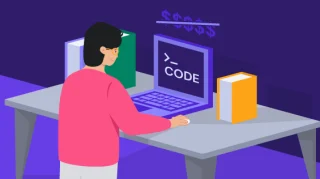A Guide to Swift Bootcamps: Learning Apple’s Modern Programming Language
Swift is a modern programming language created by Apple in 2014 to develop applications for macOS, iOS, watchOS, and tvOS. Swift is easy to read, safe, and fast, making it an ideal language for developing applications on Apple’s platforms. With the increasing demand for skilled developers, bootcamps have become a popular option for people looking to learn Swift and start a career in the tech industry. In this article, we will provide a guide to Swift boot camps and how to choose the right one for you.
What is a Swift Bootcamp?
A Swift bootcamp is an intensive, short-term training program that teaches students the fundamentals of Swift programming language. Bootcamps are designed to be hands-on and practical, with students working on real-world projects to gain practical experience. Bootcamps are different from traditional college programs, which can take years to complete and are more theoretical. Bootcamps are shorter, focused, and provide more practical training. Bootcamps are also popular because they are often taught by industry professionals who can provide insights into the latest trends and best practices in the tech industry.
Choosing the Right Swift Bootcamp
Choosing the right bootcamp can be a daunting task, given the number of options available. Here are some factors to consider when choosing a Swift bootcamp:
Curriculum:
The curriculum should cover the fundamentals of Swift, including syntax, data types, control flow, and functions. The bootcamp should also cover iOS development, including user interfaces, data persistence, and networking.
Instructor Experience:
Look for bootcamps that are taught by experienced instructors who have worked in the tech industry. Instructors should be knowledgeable about the latest trends and best practices in Swift development.
Course Length:
Bootcamps can range from a few weeks to several months. Consider how much time you can commit to a bootcamp and choose a program that fits your schedule.
Cost:
Bootcamps can be expensive, with some programs costing several thousand dollars. Consider your budget and choose a program that is affordable.
Job Placement:
Look for bootcamps that offer job placement services. Bootcamps that have partnerships with tech companies can help you find job opportunities after completing the program.
Benefits of a Swift Bootcamp
There are many benefits to attending a Swift bootcamp, including:
Hands-on Training:
Bootcamps provide practical, hands-on training that allows students to apply what they have learned to real-world projects. This type of training can be more effective than theoretical classroom instruction.
Faster Learning:
Bootcamps are designed to be intensive and focused, allowing students to learn the fundamentals of Swift programming in a shorter amount of time than traditional college programs.
Industry Insights:
Bootcamps are often taught by industry professionals who can provide insights into the latest trends and best practices in the tech industry.
Job Opportunities:
Bootcamps that offer job placement services can help students find job opportunities after completing the program.
Networking:
Bootcamps provide opportunities to network with other students and industry professionals, which can lead to job opportunities and other career benefits.
Conclusion
Swift is a popular programming language for developing applications for Apple’s platforms, and bootcamps can provide an excellent way to learn the language quickly and effectively. When choosing a Swift bootcamp, consider the curriculum, instructor experience, course length, cost, and job placement services. Attending a bootcamp can provide many benefits, including practical training, faster learning, industry insights, job opportunities, and networking. If you are interested in learning Swift and starting a career in the tech industry, a bootcamp may be the right choice for you.









